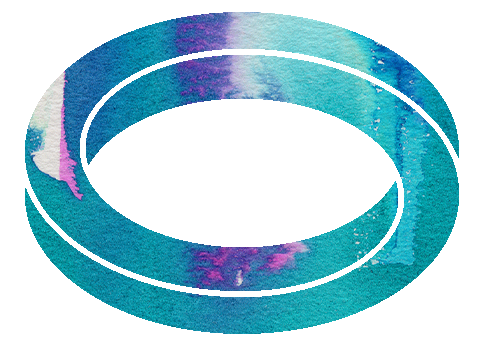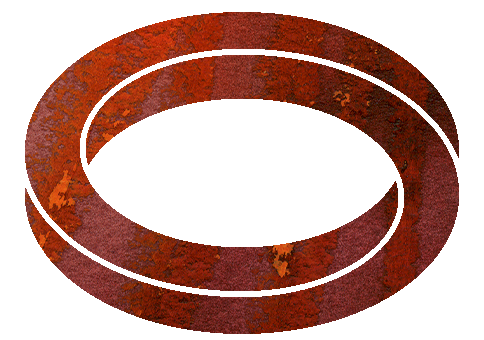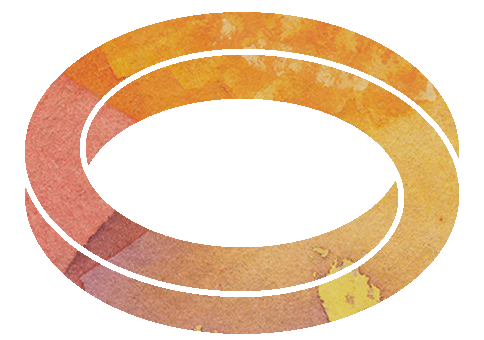The empath is a channel of non-ordinary perception, in which your own body’s signals reliably reflect what’s happening in your client’s body.
I first learned about this channel from Hugh Milne. For years, I looked to the empath channel as a primary source of information about my client’s experience.
My right leg tingled or ached; theirs did too. My heart clenched or swelled; so did theirs. It led to a call and response in sessions: the symptoms in the local body — call it my body or the client’s — drew me along through the session, orchestrating the location of my contacts, and dictating the timing of my stay at each.
This channel of non-ordinary perception was a splendid complement to functional craniosacral protocols. As I moved to the biodynamic approach, the empathic cues were equally valuable. Once the empath channel was strongly developed, I could follow and interact with my client’s experience — whether or not I was touching.
For many of my clients, the session’s clinical effectiveness lay in their transition from Cranial Wave to a Neutral; or from a Neutral to the Fluid Tide. My ability to perceive and accompany them in that evolution was meaningful in unlocking the experience. And nothing better signified my own ability to accompany the client, than our two bodies resonating as one — that is, my body’s empathic awareness of what was happening.

Through the empath channel, it was effortless to recognize what was happening in my client’s experience. It could be a precise sensation in a particular cranial bone; a blissful wave that fluctuated through the torso; or images from a troubling event. Whatever it was, it was available in the field that the client and I co-inhabited. Usually, this would be the field of the Fluid Tide.
In my experience, the empath channel has less impact in a Long Tide session. Not only is healing then occurring in a vast space beyond the physical bodies, but the session is less about the client’s body or about their emotions, unique narrative, or personal healing. There’s little to know in the Long Tide.
However, the practitioner’s lack of empathic impressions in the Long Tide is not obvious at first. The Long Tide is the arena of compassion and empathy, so there may be distractingly exquisite feelings on a grand scale: Joy, Reverence, Awe…Emotions with capital letters. The vastness, beauty and iridescence are captivating, and the healing undeniable. The client is likely to be bowled over. Sometimes the practitioner is, too.
This continues in the Dynamic Stillness. I’m not “there” to enjoy the void, and neither is my client. But on our return to the world and to the body, it’s indisputable that something magnificently refreshing has occurred.
Empathic cues are affirming and even necessary as we start out. They can be a valuable source of information and validation. Whenever they occur, they are profoundly useful.
As a result, perhaps, it’s easy not to notice the problem with empathy.

The problem doesn’t arise until a mature stage of practice, when Stillness absorbs the (previously copious) phenomena. If I rely on empathic cues to confirm clinical effectiveness, then after years of being able to speak confidently with my clients about their experience, I simply lose the thread.
It’s mysterious. My clients continue to experience transformative experiences and vivid healing. But I reside in a co-arising field of eventless nothingness. I’m simply aware of Stillness, and nothing else.
Therefore, as I accompany my clients in their sessions, I no longer have access to either their story or the associated phenomena. I’m aware of nothing. So I could easily convince myself that nothing is happening. And I do, multiple times a day. But then, clients rise from the table visibly or palpably shiny, buoyant, expansive, or settled.
When they share their experiences with me, I often notice they have plenty to report. Or maybe they experienced very little in the session, but they text later to say that their pain has resolved. Several clients have deeply addressed longstanding emotional and physical issues.

This perceptual disposition that I’m caught in? It’s an evolutionary stage in which the practitioner is aware of both the physical world and the non-physical world (what we would call the Dynamic Stillness) at the same time.
In this stage of perception, as the practitioner we are lucid and fully aware of self, client, treatment room, thoughts, etc. Yet we’re also continuously aware of the Silence and Stillness that underlie all phenomena. In the context of a session, the orientation to Stillness seems to prevent us from noticing much of the client’s subtle activity.
The empathic channel provokes an assumption that the practitioner’s form is occupied by another’s experience. You’d think that experiencing someone else’s symptoms in my own body is the very definition of blurring personal boundaries and not assuming a separate self. But ironically, the empathic cues can inadvertently tether us to identifying as a practitioner with a personal body, professional expertise, and an urge to help.
“Ahhh, yes, I know what’s happening here. My client is experiencing pain in her shoulder. Now I feel like an authority, I know what is happening, and I know where to make contact!”
Yet some of the richest, most profound and awe-inspiring work occurs when we let go of those limiting beliefs. When the practitioner releases our impulse to know, to help, and to treat, then we support and enliven the therapeutic agency that is already at the root of our client’s life, energy, and well-being. What unfolds does not rely on the practitioner’s personal knowing.
Global Awareness knows and acts, even when (or especially when) the practitioner is oriented to or submerged in Stillness. Stillness always palpably underlies whatever activity arises.
I still occasionally benefit from the empath channel, or one of my other non-ordinary faculties, such as sensitivity in my hands or inner vision. I seem to be aware of things on a “need-to-know basis.” Usually, though, I’m simply aware of stillness. In other words, I know nothing.
Yes, I sometimes yearn for the days of more consistent and authoritative subtle perception. But there seems to be a consensus emerging in our community, that all channels of non-ordinary perception give way to Stillness. This seems to be a natural direction that our development takes.
If we can make peace with the resulting lack of information, Biodynamics unfolds as beautifully as ever for our clients. I’m here to vouch for it! And even if I don’t participate in the process in the same way, I am able to observe the excellent clinical outcomes without a problem.
I’d love to know your perspective. What channels of non-ordinary perception do you rely on? Have you experienced phenomena disappearing into the Stillness? If so, how do you grapple with the loss your clinical cues?
2 Comments
Leave a Comment

BE THE FIRST TO HEAR
ABOUT UPCOMING EVENTS
AND PUBLICATIONS.
Unsubscribing is always available with a single click.
I still feel like I am tuning into the stillness and things will pop in and out of my awareness at times, and simultaneously my hands will move somewhere on the body, not feeling like I am “treating” but rather that my hands are tuned into something beyond a structure or “problem”. I trust that process and I don’t put any thought into the why as I feel like the moment I do, I am treating as before Biodynamic work.
The feedback from my clients is always interesting and full of experiences that I was not connected to as I was in my traditional CST work.
I love this, Michele! I hear you speaking to the *trust* that builds in us, whether it’s the Long Tide moving our hands or something even more mysterious that we could call Stillness. Something meaningful happens when we attune to the stillness…even if we are not able to identify or analyze it during the table work. Our clients’ feedback gives us a reality check; plus, we ourselves can sense into the session’s impact, after-the-fact.